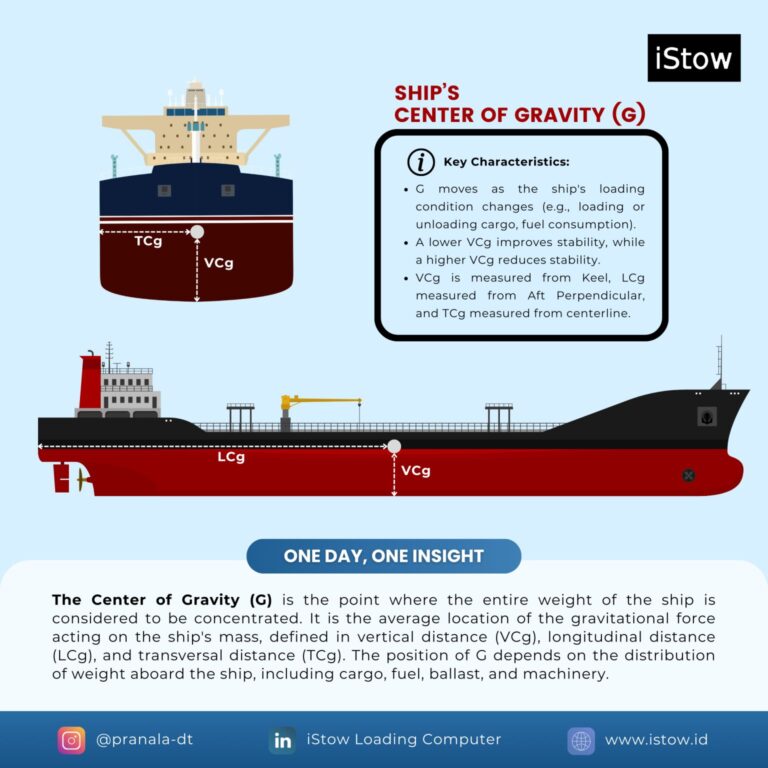Understanding Ship Stability: The Role of the Center of Gravity
Center of Gravity (G) plays a vital role in a ship’s stability at sea, and the point where the entire weight of the ship is considered to be concentrated.
By Pranala Digital Transmaritim
12 February 2025
Center of Gravity (G) plays a vital role in a ship’s stability at sea, and the point where the entire weight of the ship is considered to be concentrated. It is the average location of the gravitational force acting on the ship’s mass, defined in vertical distance (VCg), longitudinal distance (LCg), and transversal distance (TCg).
The position of G depends on the distribution of weight aboard the ship, including cargo, fuel, ballast, and machinery, that why determines how a vessel reacts to external forces, like waves or cargo shifts.

Infographic about Center of Gravity (2025). Photo: Pranala Digital Transmaritim
Here’s why it matters:
–Position of G: A low center of gravity improves stability, while a high G can make the ship prone to capsizing.
–Balance & Safety: Properly managing G ensures the ship remains upright and stable under all conditions.
–Dynamic Adjustments: Ballast, fuel, and cargo loading all influence G and must be carefully monitored.
Key Characteristics:
-G moves as the ship’s loading condition changes (e.g., loading or unloading cargo, fuel consumption).
-A lower VCg improves stability, while a higher VCg reduces stability.
-VCg is measured from Keel, LCg measured from Aft Perpendicular, and TCg measured from centerline.
